Chiyoda ward, Tokyo東京都千代田区
Living in Chiyoda Ward, Tokyo
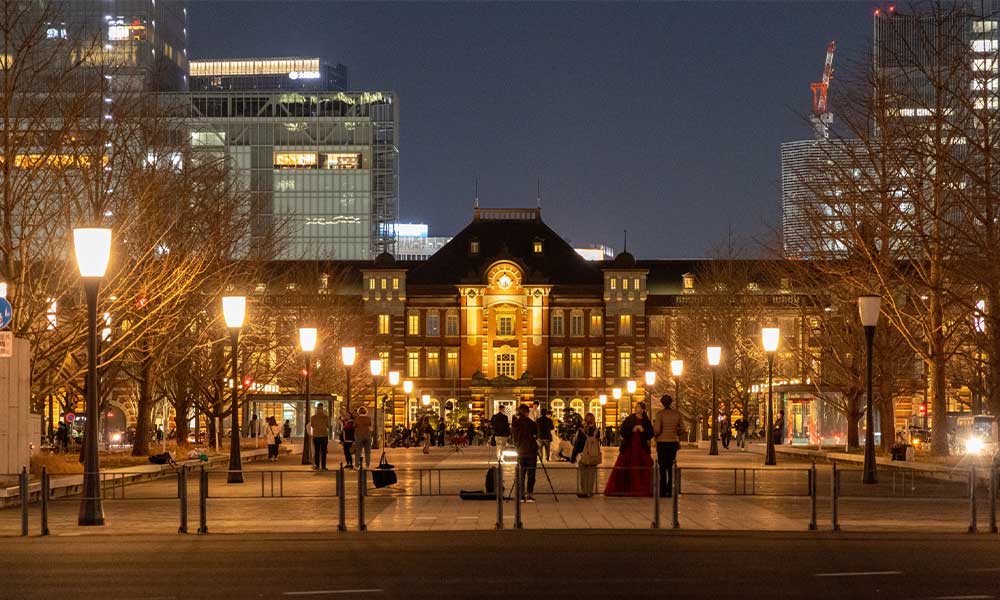
We have Summarized the livability of Chiyoda Ward, Tokyo.
23 WARD AREA23区地域
-
- CHIYODA WARD 千代田区
-
- CHUOU WARD 中央区
-
- MINATO WARD 港区
-
- SHINJYUKU WARD 新宿区
-
- BUNKYO WARD 文京区
-
- TAITO WARD 台東区
-
- SUMIDA WARD 墨田区
-
- KOTO WARD 江東区
-
- SHINAGAWA WARD 品川区
-
- MEGURO WARD 目黒区
-
- OTA WARD 大田区
-
- SETAGAYA WARD 世田谷区
-
- SHIBUYA WARD 渋谷区
-
- NAKANO WARD 中野区
-
- SUGINAMI WARD 杉並区
-
- TOSHIMA WARD 豊島区
-
- KITA WARD 北区
-
- ARAKAWA WARD 荒川区
-
- ITABASHI WARD 板橋区
-
- NERIMA WARD 練馬区
-
- ADACHI WARD 足立区
-
- KATSUSHIKA WARD 葛飾区
-
- EDOGAWA WARD 江戸川区
CONTENTS
- What kind of place is Chiyoda Ward, Tokyo?
- Chiyoda WardPR video
- How is the traffic situation in Chiyoda Ward?
- How are the rent and land prices in Chiyoda Ward?
- How is childcare and education in Chiyoda Ward?
- How about shopping in Chiyoda Ward?
- How about jobs and recruitment in Chiyoda Ward?
- Chiyoda Ward’s unique subsidy/subsidy system
What kind of place is Chiyoda Ward, Tokyo?
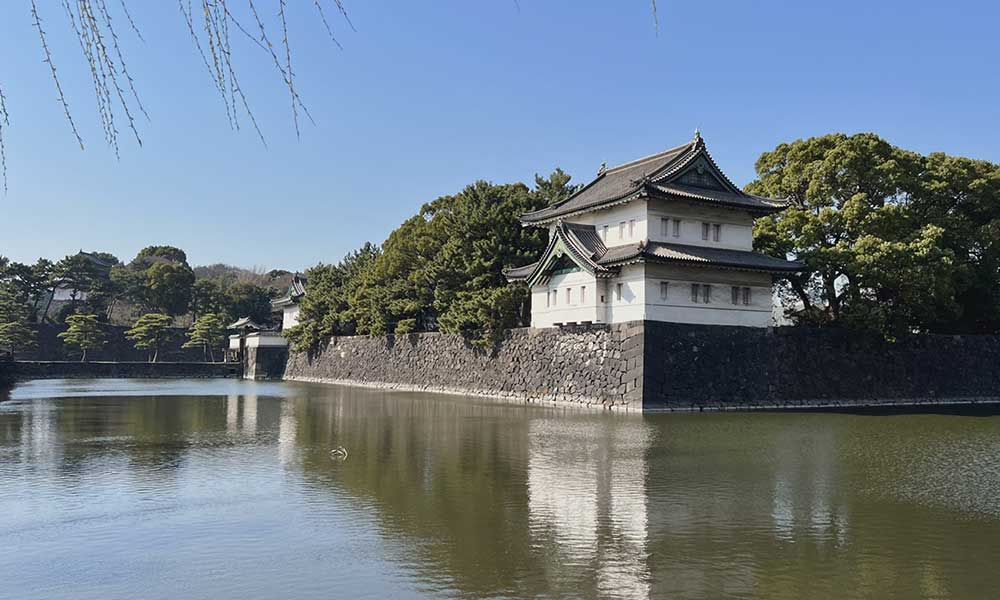
Chiyoda Ward, the central area of Tokyo surrounding the Imperial Palace
It is located almost in the center of Tokyo’s 23 wards and has an area of approximately 11.66 square kilometers. It has a population of approximately 67,000 and approximately 38,000 households (as of December 2022). It is bordered by Bunkyo Ward and Taito Ward to the north, Chuo Ward to the east, Minato Ward to the south, and Shinjuku Ward to the west. The Imperial Palace is located in the southern part of the ward, and its area accounts for 12% of the ward’s area.
In 1947, Kojimachi Ward and Kanda Ward merged to form Chiyoda Ward.
The name “Chiyoda” comes from Edo Castle’s other name, Chiyoda Castle, and originates from the fact that the area developed around this castle.
Edo Castle was once the political center of the Tokugawa Shogunate, and samurai residences lined the area, forming the castle town of Edo. After the Meiji period, the former samurai residence sites were converted into government offices, and the foundations were laid for the area to become a major political and economic center.
Today, it is a place where various institutions and companies are crowded together, and it is the center of Japan’s politics, administration, and justice, with the capital’s functions such as the National Diet Building and the Supreme Court concentrated there.
Tokyo Station, the central JR station, is also located in this area, and is the starting point for multiple conventional lines and the Shinkansen. Each station has its own unique culture and has developed into a base for tourism and business.
The area around Akihabara Station is the number one electronics district in Japan, and is a popular area bustling with customers every day as a geek town.
The National Diet Building and other central government offices are located around Kokkai-gijido Station, Kasumigaseki Station, and Nagatacho Station, and are an office district lined with high-rise buildings.
The area around Ochanomizu Station is famous as a student town, with many universities, vocational schools, and cram schools, including Meiji University.
The area around Kudanshita Station, which is close to the Imperial Palace, is home to Chidorigafuchi, famous for cherry blossom viewing, Yasukuni Shrine, Kitanomaru, where the Nippon Budokan and National Archives are located, and many historic schools.
The Marunouchi area is famous as one of Japan’s leading business districts, and because of this characteristic, the daytime population of the entire ward is about 20 times its nighttime population, making it an established city filled with working people.
As a historic area, traditional festivals are also popular, and the Kanda Festival, which has been held since the Edo period, is one of Japan’s three major festivals, and is famous for being a festival that is crowded with many spectators every May, with floats and horse-riding warriors parading through the city.
PR video of Chiyoda Ward, Tokyo
Chiyoda – Perfect day for a walk
Chiyoda Ward Information [Full Edition]
How is the traffic situation in Chiyoda Ward?

All roads lead to Chiyoda Ward “Chiyoda Ward”
There are 26 train lines and 27 stations in Chiyoda Ward.There are 26 train lines and 27 stations in Chiyoda Ward.
| Tokyo Station |
JR Tokaido Line・JR Yamanote Line・JR Keihin Tohoku Line・JR Yokosuka Line・JR Sobu Line・JR Keiyo Line・JR Chuo Line・JR Ueno Tokyo Line・Tokyo Metro Marunouchi 【shinkansen】JR Tohoku Shinkansen・JR Joetsu Shinkansen・JR Hokuriku Shinkansen・JR Tokaido Shinkansen |
| Akihabara Station | JR Yamanote Line・JR Keihin Tohoku Line・JR Sobu Line・Tokyo Metro Hibiya Line・Tsukuba Express |
| Kudanshita Station | Tokyo Metro Tozai Line・Tokyo Metro Hanzomon Line・Toei Shinjuku Line |
| Kanda Station | JR Yamanote Line・JR Keihin Tohoku Line・JR Chuo Line・Tokyo Metro Ginza Line |
| Yurakucho Station | JR Yamanote Line・JR Keihin Tohoku Line・Tokyo Metro Yurakucho Line |
| Otemachi Station | Tokyo Metro Marunouchi Line・Tokyo Metro Tozai Line・Tokyo Metro Chiyoda Line・Tokyo Metro Hanzomon Line・Toei Mita Line |
| Suidobashi Station | JR Sobu Line・Toei Mita Line |
| Jimbocho Station | Tokyo Metro Hanzomon Line・Toei Mita Line・Toei Shinjuku Line |
| Iidabashi Station | JR Sobu Line・Tokyo Metro Tozai Line・Tokyo Metro Yurakucho Line・Tokyo Metro Namboku Line・Toei Oedo Line |
| Ichigaya Station | JR Sobu Line・Tokyo Metro Yurakucho Station・Tokyo Metro Namboku Line・Toei Shinjuku Line |
| Ochanomizu Station | JR Sobu Line・JR Chuo Line・Tokyo Metro Marunouchi Line |
| Nagatacho Station | Tokyo Metro Yurakucho Line・Tokyo Metro Hanzomon Line・Tokyo Metro Namboku Line |
| Iwamotocho Station | Toei Shinjuku Line |
| Hibiya Station | Tokyo Metro Hibiya Line・Tokyo Metro Chiyoda Line・Toei Mita Line |
| Hanzomon Line | Tokyo Metro Hanzomon Line |
| National Diet Building Station | Tokyo Metro Marunouchi Line・Tokyo Metro Chiyoda Line |
| Tameike-Sanno Station | Tokyo Metro Ginza Line・Tokyo Metro Namboku Line |
| Takebashi Station | Tokyo Metro Tozai Line |
| Kasumigaseki Station | Tokyo Metro Marunouchi Line・Tokyo Metro Hibiya Line・Tokyo Metro Chiyoda Line |
| Ogawamachi Station | Toei Shinjuku Line |
| Kojimachi Station | Tokyo Metro Yurakucho Line |
| Nijubashimae Station | Tokyo Metro Chiyoda Line |
| Sakuradamon Station | Tokyo Metro Yurakucho Line |
| Shin-Ochanomizu Station | Tokyo Metro Chiyoda Line |
| Uchisaiwaicho Station | Toei Mita Line |
| Awajicho Station | Tokyo Metro Marunouchi Line |
| Suehirocho Station | Tokyo Metro Ginza Line |
The area is surrounded by a railway network centered around Tokyo Station, the starting point of the Shinkansen and several conventional lines, and is a city that boasts undeniable convenience in terms of transportation, including long-distance trips.
The bus routes that run through the ward are Toei Bus, Tokyu Bus, and Keio Bus.
The Marunouchi Shuttle, operated by Hinomaru Jidosha Kogyo, is a free bus that travels around major companies and facilities in the ward, making it a useful means of transportation for shopping and business.
There are interchanges for the Metropolitan Expressway Inner Circular Route, Metropolitan Expressway Route 5 Ikebukuro Line, and Metropolitan Expressway Yaesu Line. Major roads include National Route 1, National Route 246, and National Route 20.
The highways can be accessed by driving for a few minutes, and there are many well-maintained roads, making it an area where you can enjoy a comfortable drive.
When it comes to traveling by train or car, the area is extremely convenient, with an accessible network that allows you to reach anywhere in Japan.
During rush hour at Tokyo Station, it gets very crowded with business people transferring, and the station is so large that it’s easy to get lost. Parking for a car is expensive and maintenance costs are high.
How are the rent and land prices in Chiyoda Ward?
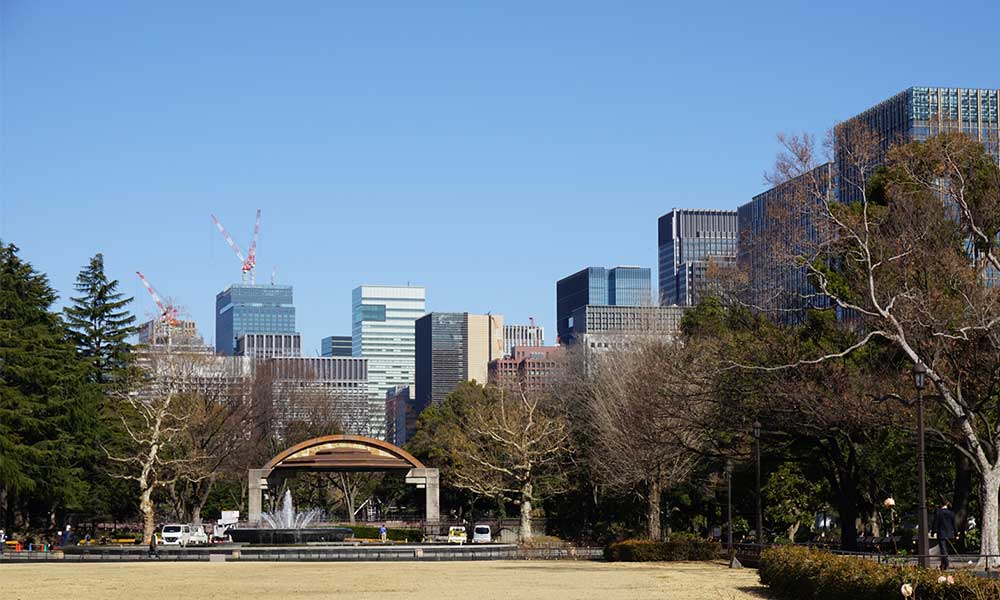
Chiyoda Ward, the central area of Tokyo, where housing prices are high
According to information from a real estate information site, the average rent in the ward is about 120,000 yen for a 1K and 203,000 yen for a 2DK within a 10-minute walk from the station.
This is the second most expensive area in the 23 wards of Tokyo after Minato Ward.
The average land price per tsubo is about 16.5 million yen per tsubo.
The most expensive area is Nijubashi-mae, with an incomparable price of 121.32 million yen. Looking at the whole of Tokyo, it is the second most expensive after Chuo Ward, and most of the area is lined with office buildings and complex facilities, and there are few areas that can be called residential areas in the first place. It can be said that it is quite difficult to own a new detached house in this area. There is not much on the used detached house market, and even if there are any, you have to be prepared to pay hundreds of millions of yen.
The average price of a new apartment is 117.55 million yen, the average area is 60.23 m2, and the average price per tsubo is 6.452 million yen per tsubo. (2018-2022)
A 1K to 1LDK apartment for a single person will cost between 45 million and 100 million yen, while for a family you will need between 100 million and 200 million yen depending on the location.
If the used apartment is over 30 years old, it is possible to find a family-type apartment for under 100 million yen.
How is childcare and education in Ciyoda Ward?
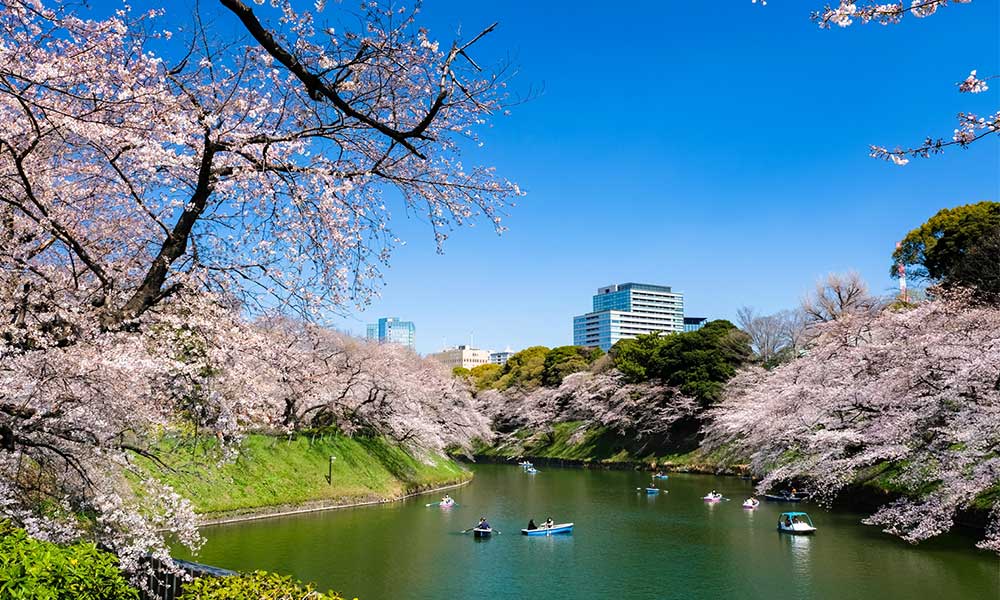
Chiyoda Ward: A city with plenty of subsidies and support for families with children
Chiyoda City has 15 nurseries, 9 kindergartens, 12 elementary schools, 15 junior high schools, 18 high schools, 40 junior colleges and universities, and 20 vocational schools.
The “Medical Expense Subsidy System for Children and High School Students” covers children up to 18 years old (as of March 31 after they reach 18 years old) for both outpatient and inpatient care, and fully subsidizes the cost. (Some exceptions apply.)
Child allowances are provided: 15,000 yen for children under 3 years old, 10,000 yen for the first and second children aged 3 years old or older and not yet entering elementary school, 15,000 yen for the third child and onwards, and 10,000 yen for junior high school students. (Some income restrictions apply)
Chiyoda Ward provides its own allowance, the “Next Generation Development Allowance.” This is a system that provides an allowance to those raising children up to high school age who are not eligible for the child allowance (national system). The allowance is 5,000 yen per child per month.
Chiyoda Ward also offers various forms of support for child-rearing.
The ward has set up a “child-rearing coordinator” where people can talk to qualified childcare workers and social workers about their concerns and receive information about child-rearing.
At the “Mama Papa Interviews,” public health nurses and nurses interview all pregnant women and provide various consultations about pregnancy, childbirth, and child-rearing. In addition, those who attend the interviews will receive a 10,000 yen child-rearing voucher to use in preparation for pregnancy.
There are four public nursery schools in Chiyoda Ward. These are integrated childcare facilities that combine the best of nursery schools and kindergartens, and provide consistent care for children from birth to preschool age. They provide long hours of care like nursery schools and also offer early childhood education like kindergartens.
In addition, Chiyoda Ward has a variety of facilities such as ward-run childcare centers, certified childcare centers, small-scale childcare facilities, and corporate childcare centers that dual-income families can choose from based on their lifestyle, making them a great help when raising children.
There are four private elementary schools and ten junior high schools in Chiyoda Ward. Many of these schools are high-level and have a long history, making it an ideal area for receiving a high-level education starting from elementary school.
Among the 23 wards, this area has the fewest children on waiting lists for admission to daycare. There are many private schools, including some with a long history that even the Imperial family attends, so students can receive a high-quality education.
There are few public facilities such as parks in the ward, and few facilities for children.
How about shopping in Ciyoda Ward?
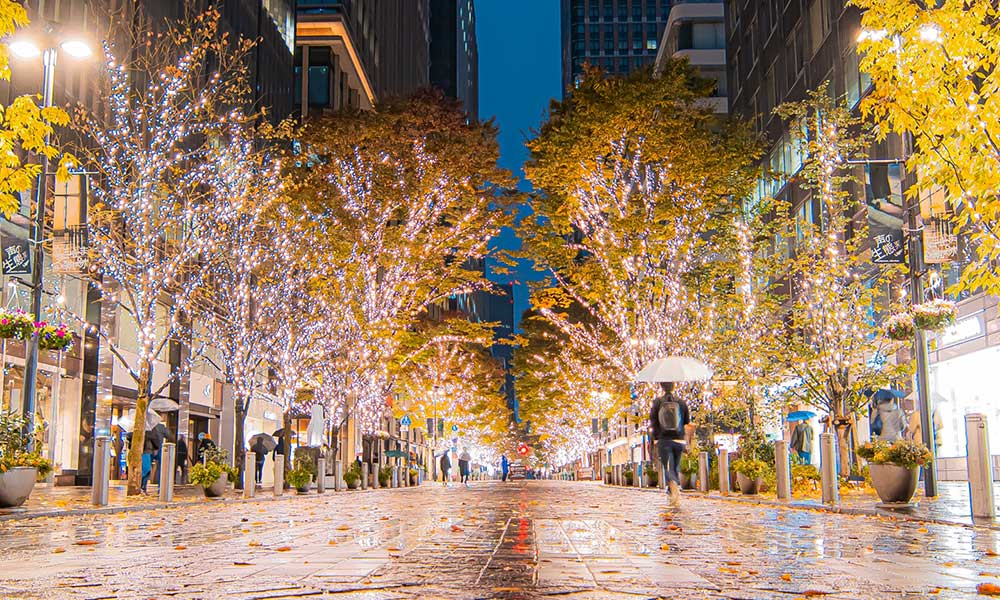
Chiyoda Ward is a city lined with the latest department stores and many fashionable shops.
While the area is lined with multiple stores such as large high-rise shopping malls, station buildings, and department stores centered around Tokyo Station, it is an office district with few everyday shops such as supermarkets and drugstores, making it an expensive area.
There are countless shops and restaurants just inside and around Tokyo Station, and as soon as you step outside, you’ll find stylish cafes, shopping malls, and high-rise buildings housing offices and restaurants all within walking distance.
There are many shops just inside Tokyo Station, and it is popular with tourists and office workers who use the Shinkansen, with places like “Tokyo Station Ichibangai,” a bustling underground shopping street lined with restaurants and shops, “Gransta,” which has a wide variety of souvenirs and bento boxes, and “Ecute Tokyo,” which has a wide variety of bento boxes.
The Marunouchi exit of Tokyo Station is an area with several high-rise buildings, including KITTE Marunouchi, a modern high-rise building with restaurants and multiple shops, Marunouchi OAZO, a complex with offices and stores, and Marunouchi MY PLAZA.
Also, at the Yaesu exit, you’ll find the popular “Daimaru Tokyo Store,” which is home to high-end brand stores, gourmet food in the department store basement, and bento boxes.
The area around Yurakucho Station is a great place for shopping, with many complex buildings and fashion buildings, including Yurakucho Marui, which is located right outside the station, Yurakucho Itocia, which houses multiple offices, and a href=”https://www.lumine.ne.jp/yurakucho/” target=”_blank” rel=”noopener”>Lumine Yurakucho, which has many shops and restaurants.
There are so many stylish shops and restaurants that you won’t be able to find anything you want.
There are few reasonably priced supermarkets, and prices are generally high.
How about jobs and recruitment in Ciyoda Ward?
Chiyoda Ward is home to many of Japan’s largest companies’ headquarters.
The average income in Chiyoda Ward is 9,851,000 yen, making it the second highest-income area in the country.
This area, famous as an office district, is home to the headquarters of government agencies, financial institutions, major newspapers, and major companies, so it is an area where you can earn a high income depending on your abilities.
There are also many fashion buildings and complexes, so the area is always full of part-time job openings, such as customer service positions.
Ciyoda Ward’s unique subsidy/subsidy system
Ciyoda Ward, Tokyo’s unique housing assistance and subsidy system
| Next Generation Development Allowance |
Ciyoda Ward’s Tokyo’s unique housing assistance and subsidy system
Ciyoda Ward, Tokyo’s unique childcare support system
| Next Generation Development Allowance Medical Expense Subsidy System for Children and High School Students |
Ciyoda Ward, Tokyo’s unique system for further education and tuition assistance/subsidies
| School attendance assistance system Special Needs Education Enrolment Incentive Subsidy |
























